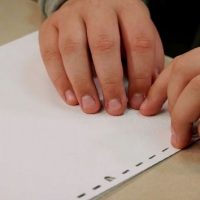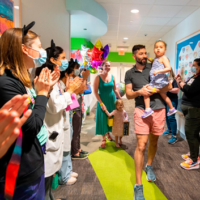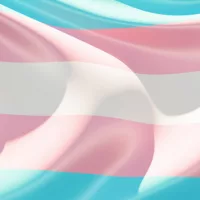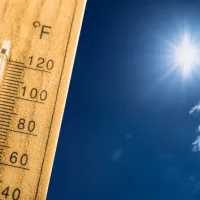
 Braille Institute(NEW YORK) — “When my son was born, he was the first blind person I’d ever met,” Emily Coleman told ABC News’ Good Morning America.
Braille Institute(NEW YORK) — “When my son was born, he was the first blind person I’d ever met,” Emily Coleman told ABC News’ Good Morning America.
Coleman, 40, now works as a superintendent for the Texas School for the Blind and Visually Impaired, in Austin, and is an advocate for Braille education. But before her son, now 14, was born in 2005, she didn’t realize the extent of the nation’s need for Braille educators and services for blind children.
There is a national shortage of educators who know and can teach braille, and it’s leaving children who need their services in a dire predicament.
The importance of Braille as a code to access literacy
Braille is an essential skill for those without the ability to read and write print due to visual impairment or loss and provides a way for them to access literacy. However, less than 10% of legally blind people in the U.S. read Braille, according to a 2009 report from the National Federation of the Blind.
The lack of Braille education dramatically affects a person with impaired vision’s ability to find work. Over 70% of working-age adults with significant vision loss are not employed full time, according to Cornell University’s disability statistics.
About 90% of blind or severely visually impaired people who are employed use Braille, according to the 2012 Report of the National Library Service for the Blind and Physically Handicapped.
Currently, 84% of blind children attend public school and Braille instruction can be offered as little as an hour per week, reports the The National Braille Press.
While technology is inching in the right direction by including services like speech-to-text, standard on some devices, there is still a long way to go to make all the features of the modern world accessible to those with vision impairment or loss.
And misconceptions remain about the importance of Braille.
“Sometimes it’s a misunderstanding on the part of sighted people who think why can’t some people just listen to information? We have audiobooks, we have recorded information. But until we stop teaching print reading and writing to children who are sighted, we have no justification for stopping Braille reading and writing instruction for students who are blind or visually impaired,” Cay Holbrook, a professor at the University of British Columbia who has been preparing teachers to instruct Braille for over 20 years, told GMA.
“It’s not just about creating people who can go to a book and find information — it’s about creating people who love to read, who love to read and write, who gather information as a part of their lives,” she continued. “And certainly employment is dependent on a level of reading and writing and access to information that’s only available if the child has been taught.”
To be clear, Braille is not a language, it’s described as a code to access literacy. By knowing Braille, many students can go on to achieve great things, according to Kateri Gullifor, who has been teaching Braille for a decade and recently won the 2019 Braille Teacher of The Year award from the Braille Institute.
“I have a student who is in AP chemistry and honors calculus … and legally blind,” Gullifor said, adding that another one of her former students is living in New York and studying law. “To watch someone learn to read with their fingers is one of the most fascinating things you’ll ever watch.”
Braille education across the country
There are many different ways Braille education works across the country. For Coleman, she is at a state school for the blind which is a residential program with intensive Braille learning. The goal is to integrate these students into their local school systems with the building blocks they’ll need to succeed in life.
“Some students come here for a few years, and we offer boarding — and they come home on the weekends. Other students come here for a couple weeks’ bootcamp and go back to their local schools,” she said.
Gullifor’s role includes meeting students in their local schools and giving them one-on-one instruction on Braille. Her caseload ranges but she works with approximately 15 students each year and she often helps teach the same students year after year, creating lasting bonds them.
“It’s such a creative job and it’s really all about catering to exactly what each student needs,” she told GMA.
For students with visual impairments, learning Braille is one of the first steps toward independence, and for educators, it’s a rewarding career.
“I feel like if people knew how awesome our job was, [the shortage of Braille educators] would not be the case,” Gulifor said.
“I always tell people who are coming to me to learn how to teach Braille that I can guarantee them a job — in the city, in the mountains, near the ocean,” Holbrook emphasized. “It’s just that much in demand.”
Copyright © 2019, ABC Audio. All rights reserved.















